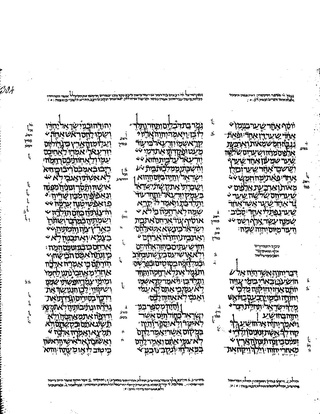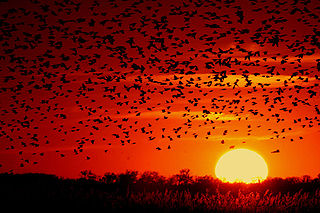Related Research Articles
An idiom is a phrase or expression that usually presents a figurative, non-literal meaning attached to the phrase. Some phrases which become figurative idioms, however, do retain the phrase's literal meaning. Categorized as formulaic language, an idiom's figurative meaning is different from the literal meaning. Idioms occur frequently in all languages; in English alone there are an estimated twenty-five million idiomatic expressions.
Yeshua was a common alternative form of the name Yahoshua in later books of the Hebrew Bible and among Jews of the Second Temple period. The name corresponds to the Greek spelling Iesous (Ἰησοῦς), from which, through the Latin IESVS/Iesus, comes the English spelling Jesus.
"An eye for an eye" is a commandment found in the Book of Exodus 21:23–27 expressing the principle of reciprocal justice measure for measure. The earliest known use of the principle appears in the Code of Hammurabi, which predates the Hebrew Bible.

Rose of Sharon is a biblical expression, though the identity of the plant referred to is unclear and is disputed among biblical scholars. It has become a common name for several different species of flowering plants that are valued in different parts of the world. In neither case does it refer to actual roses. The name's varied colloquial application has been used as an example of the lack of precision of common names, which can potentially cause confusion. "Rose of Sharon" has become a frequently used catch phrase in poetry and lyrics.

The Nephilim are mysterious beings or people in the Bible who are described as being large and strong. The Hebrew word Nephilim literally means "giant," though some understand it to mean "falling ones" which is a misunderstanding of the Hebrew as Biblical and Hebrew scholar Dr. Heiser explains in the film "Ancient Aliens Debunked". The origins of the Nephilim are disputed. Some, including the author of the Book of Enoch, view them as offspring of fallen angels and humans. Others view them as offspring of the descendants of Seth and Cain.

Targum Jonathan, otherwise referred to as Targum Yonasan/Yonatan, is the official eastern (Babylonian) targum to the Nevi'im ("prophets").
Theophory is the practice of embedding the name of a god or a deity in, usually, a proper name. Much Hebrew theophory occurs in the Bible, particularly in the Old Testament. The most prominent theophory involves names referring to:

The Angel of the Lord is an entity appearing repeatedly in the Hebrew Bible on behalf of the God of Israel.
"Ma'oz Tzur" is a Jewish liturgical poem or piyyut. It is written in Hebrew, and is sung on the holiday of Hanukkah, after lighting the festival lights. The hymn is named for its Hebrew incipit, which means "Strong Rock " and is a name or epithet for God in Judaism. It is thought to have been written sometime in the 13th century, although recent research suggests the 12th century. It was originally sung only at home, but has been used in the synagogue since the 19th century or earlier. In more recent years, of its six stanzas sometimes only the first stanza is sung.
The books of the New Testament frequently cite Jewish scripture to support the claim of the Early Christians that Jesus was the promised Jewish Messiah. Scholars have observed that few of these citations are actual predictions in context; the majority of these quotations and references are taken from the prophetic Book of Isaiah, but they range over the entire corpus of Jewish writings.
Gershayim, also occasionally grashayim, can refer to either of two distinct typographical marks in the Hebrew language. The name literally means "double geresh".
Zechariah ben Judah Aghmati, also spelled Agamati, was a Rabbi and Talmudist who lived from 1120 CE - 1195 CE in Morocco.

An idiom is a common word or phrase with a figurative, non-literal meaning that is understood culturally and differs from what its composite words' denotations would suggest; i.e. the words together have a meaning that is different from the dictionary definitions of the individual words. By another definition, an idiom is a speech form or an expression of a given language that is peculiar to itself grammatically or cannot be understood from the individual meanings of its elements. For example, an English speaker would understand the phrase "kick the bucket" to mean "to die" – and also to actually kick a bucket. Furthermore, they would understand when each meaning is being used in context.

Psalm 17 is the 17th psalm of the Book of Psalms, beginning in English in the King James Version: "Hear the right, O LORD, attend unto my cry". In the Greek Septuagint and the Latin Vulgate, it is psalm 16 in a slightly different numbering system, "Exaudi Domine iustitiam meam". Its authorship is traditionally assigned to King David.

Revelation 16 is the sixteenth chapter of the Book of Revelation or the Apocalypse of John in the New Testament of the Christian Bible. The book is traditionally attributed to John the Apostle, but the precise identity of the author remains a point of academic debate. This chapter describes the seven bowls, vials or phials of God's wrath, poured out on the wicked and the followers of the Antichrist after the sounding of the seven trumpets, on the command of "a loud voice from the temple" heard by the author.

Zechariah 2 is the second of the 14 chapters in the Book of Zechariah in the Hebrew Bible or the Old Testament of the Christian Bible. This book contains the prophecies attributed to the prophet Zechariah, and is a part of the Book of the Twelve Minor Prophets. This chapter is a part of a section consisting of Zechariah 1–8. It records the third of eight visions received by the prophet, followed by an oracle calling the exiles to return to the city where Yahweh is about to dwell and all nations will come.

Zechariah 6 is the sixth of the 14 chapters in the Book of Zechariah in the Hebrew Bible or the Old Testament of the Christian Bible. This book contains the prophecies attributed to the prophet Zechariah, and is a part of the Book of the Twelve Minor Prophets. This chapter contains the description of the eighth vision and the crowning of Joshua. It is a part of a section consisting of Zechariah 1–8.

Birds of a feather flock together is an English proverb. The meaning is that beings of similar type, interest, personality, character, or other distinctive attribute tend to mutually associate.

Proverbs 7 is the seventh chapter of the Book of Proverbs in the Hebrew Bible or the Old Testament of the Christian Bible. The book is a compilation of several wisdom literature collections; the heading in 1:1 may be intended to regard Solomon as the traditional author of the whole book, but the dates of the individual collections are difficult to determine, and the book probably obtained its final shape in the post-exilic period. This chapter is a part of the first collection of the book.
References
Citations
- 1 2 apple, n.", Oxford English Dictionary Online, 3rd edn (Oxford University Press, 2008), § 6 B.
- ↑ "Apple of one's eye". The Word Detective. Retrieved August 15, 2015.
- ↑ "Æppel", in Dictionary of Old English: A to I online, ed. Angus Cameron, Ashley Crandell Amos, Antonette diPaolo Healey et al. (Toronto: Dictionary of Old English Project, 2018), §3b.
- ↑ Cf. Gary B. Palmer, Toward a Theory of Cultural Linguistics (University of Texas Press, 1996), p. 102.
- ↑ E.g. The Hebrew and Aramaic Lexicon of the Old Testament.
Sources
- "ap'-'-l". Bible Study Tools. Retrieved October 19, 2016.
- "The meanings and origins of sayings and phrases". Phrases.org.uk. Retrieved October 17, 2012.
- "Apple of My Eye". TheIdioms.com.
- "Apple of one's eye". WorldWideWords.org. Retrieved October 17, 2012.
- Gregory I. Pope (January 1, 1999). King Alfred's West-Saxon Version of Gregory's Pastoral Care. Elibron.com. p. 68. ISBN 978-1-4021-9636-2 . Retrieved October 17, 2012.
- Transactions and Proceedings of the American Philological Association, Vol. 73, 1942